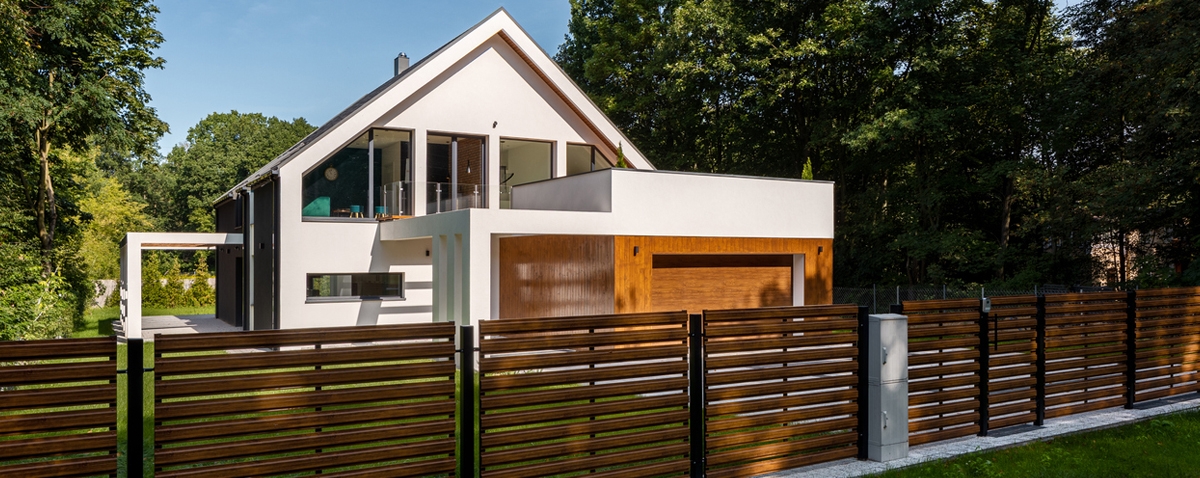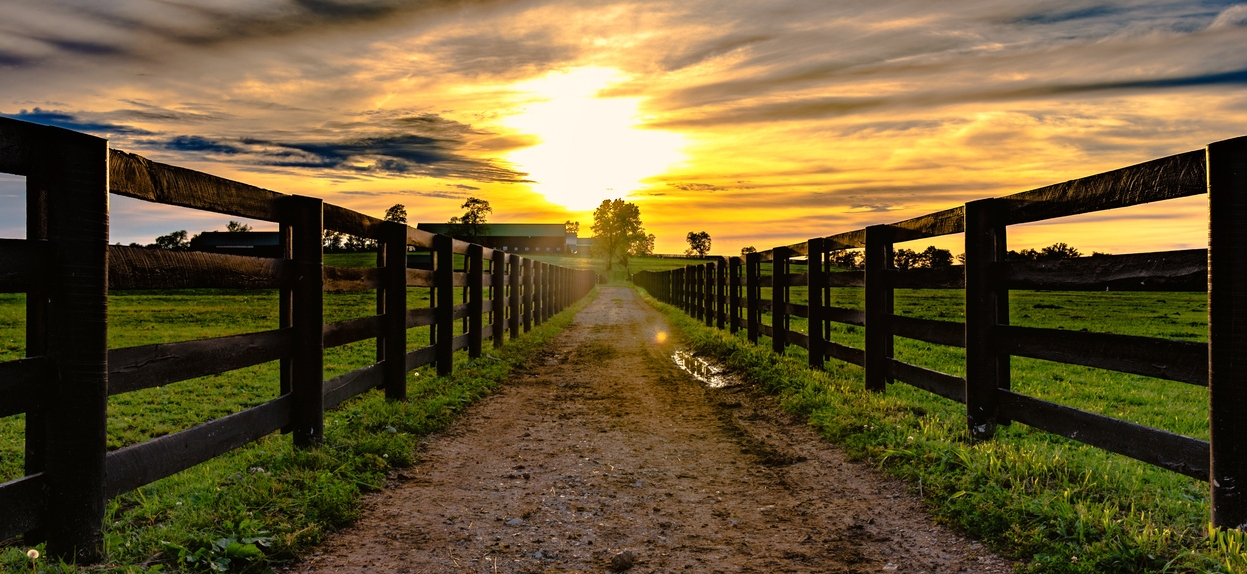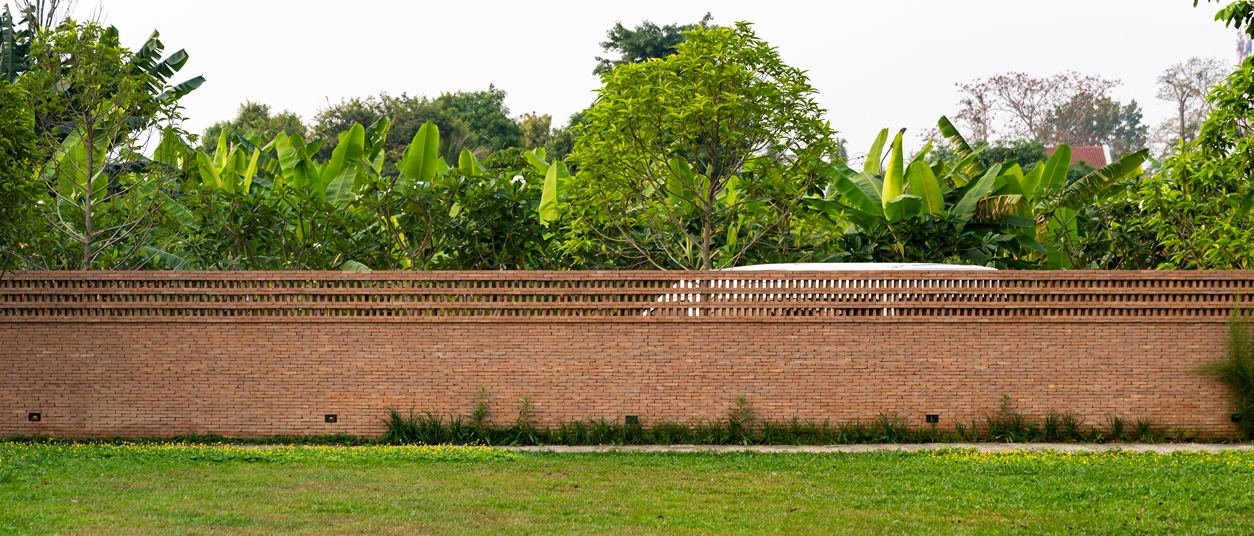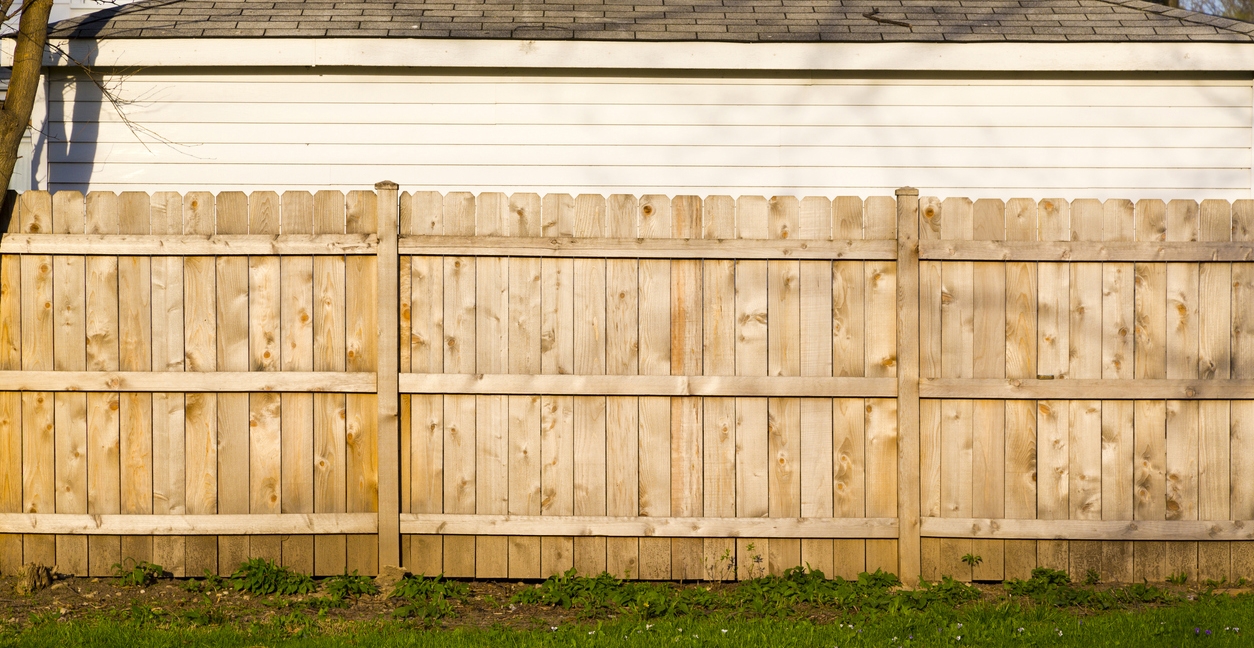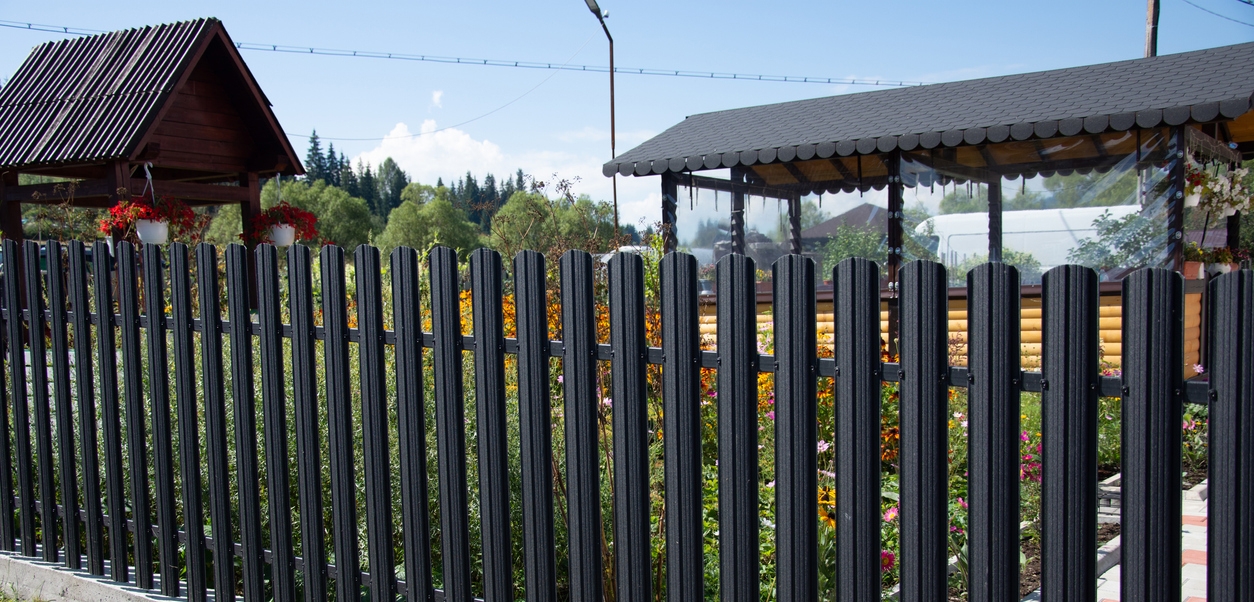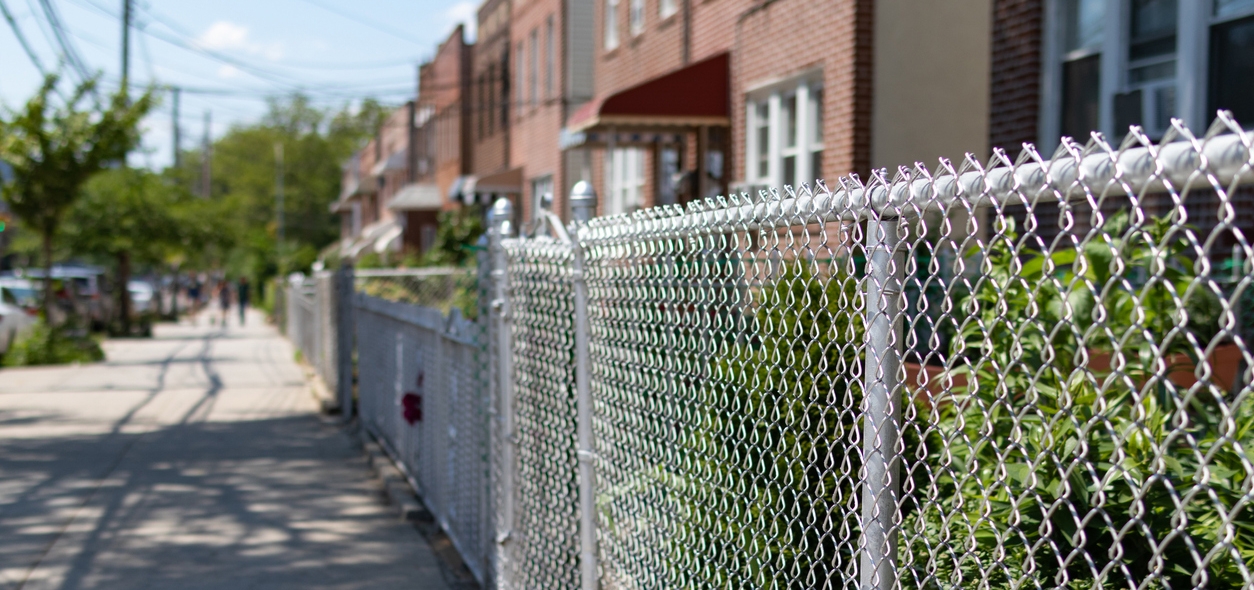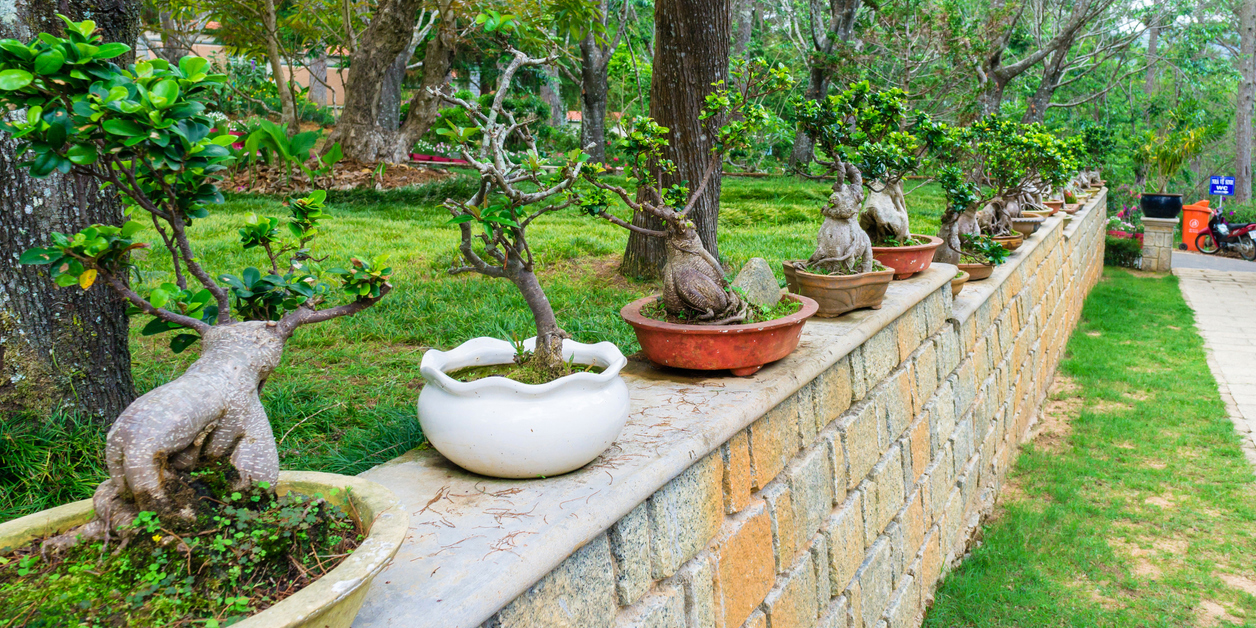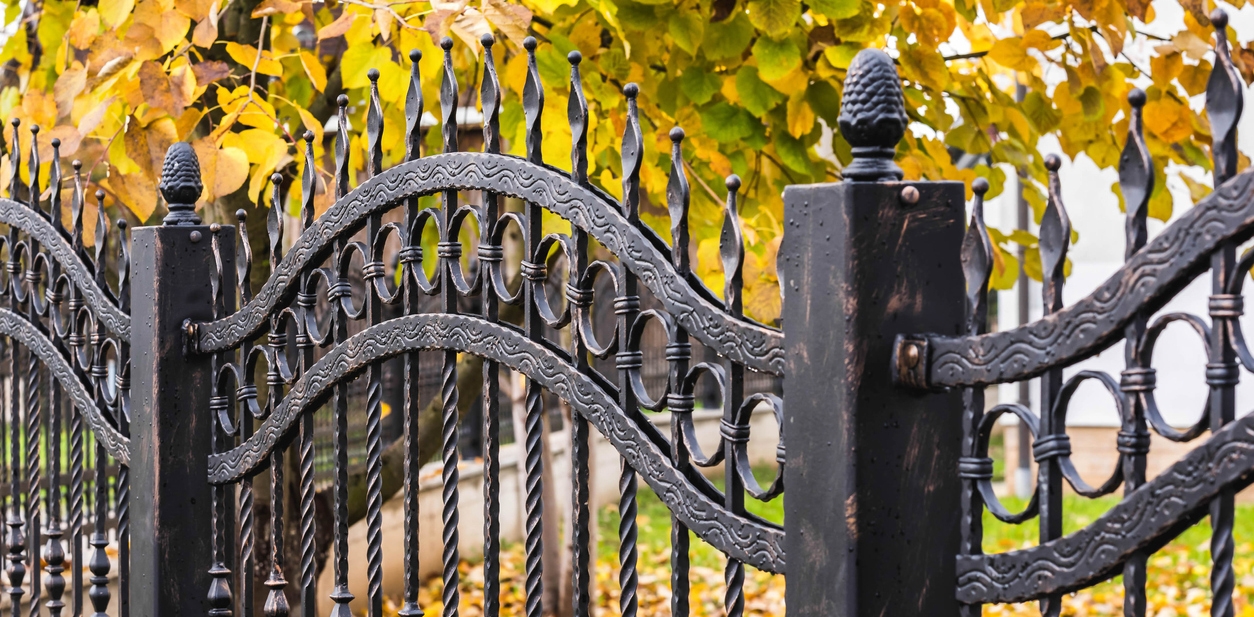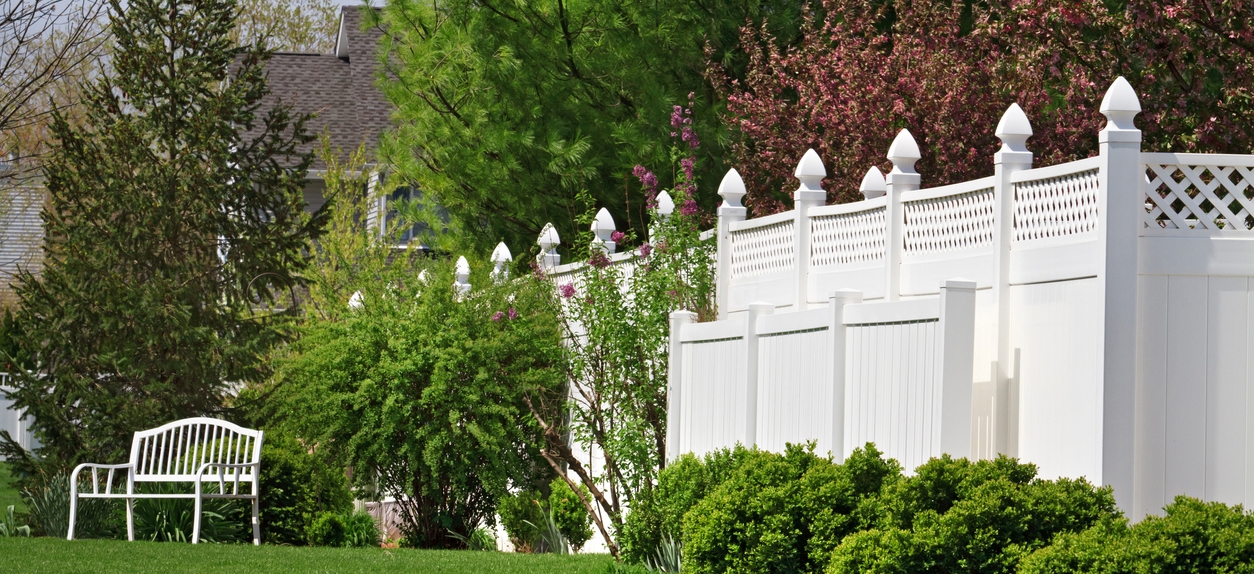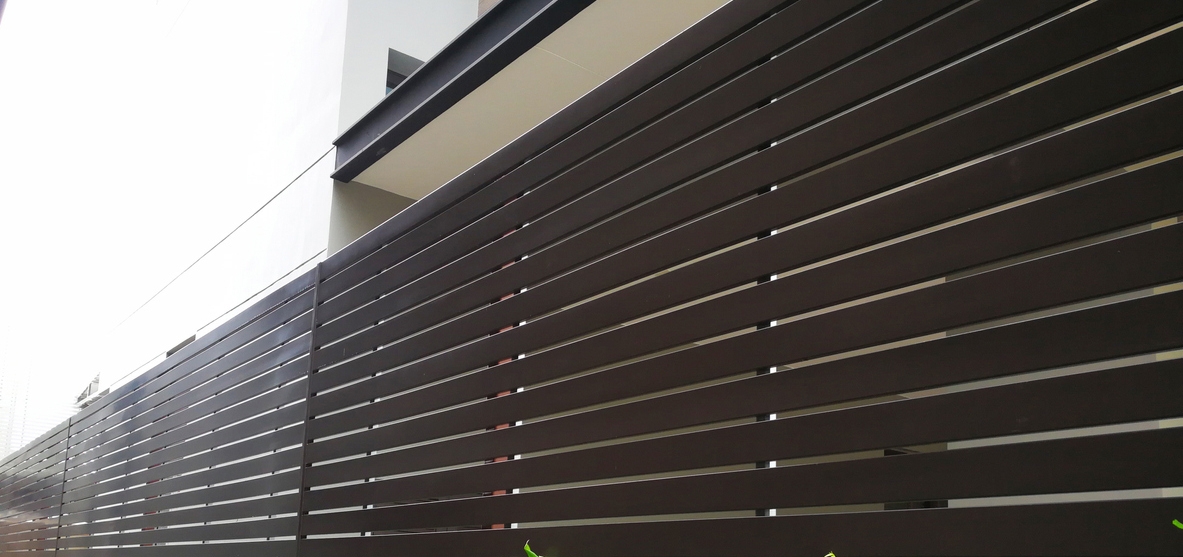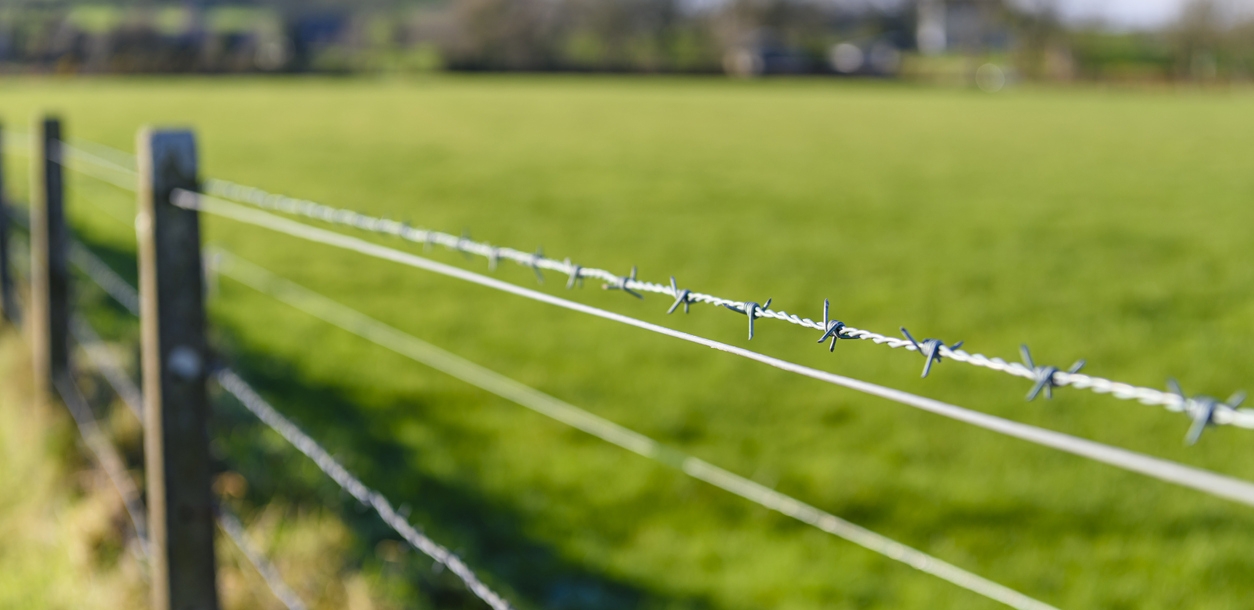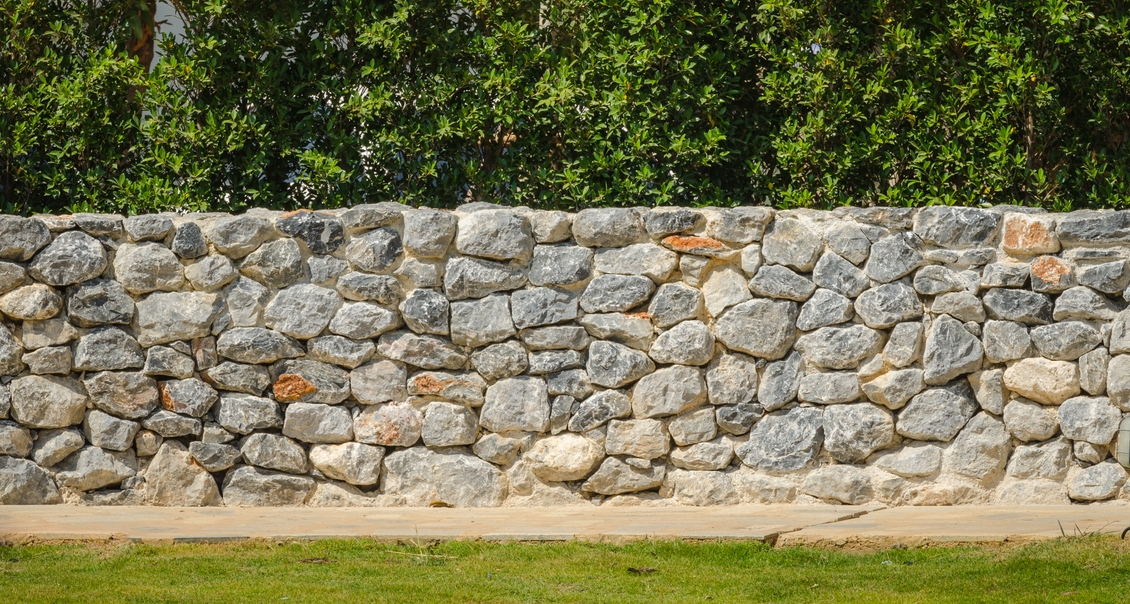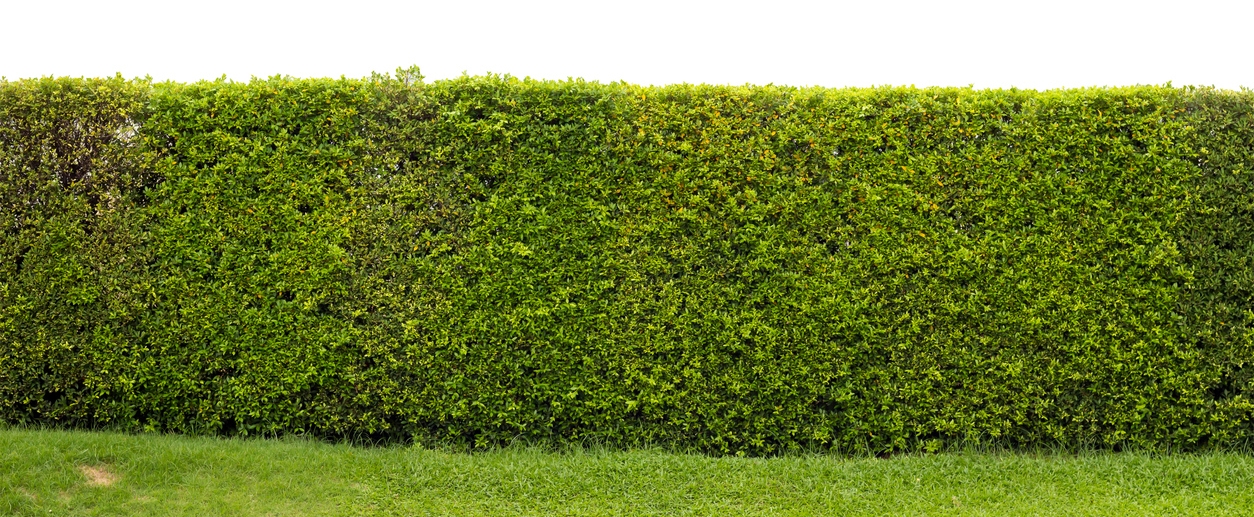Background
On just about any given day and location, you will see a fence. It’s no surprise as they can be found anywhere as they serve a wide range of purposes. It can be the fence that’s keeping the privacy of your home, protecting a business, keeping in farm animals, or one that’s setting the boundaries of owned land. Regardless of which, fences are an integral part of our daily life and have been used for the many same reasons when they were first utilized many millennia ago.
In this post, we’ll delve deeper into the most valuable information about fences that you ever wanted to know but were afraid to ask. This includes the history of fences, the importance of fencing, types, factors governing the installation of fences, the leading players, and the size of the fencing market, as well as a list of the most interesting facts about them.
A Brief History of Fences
The word “fence” hails from the word “fens,” a 14-century term that means defense or protection. As such, it’s little wonder why the word “fencing” that pertains to the structure built to protect property is spelled the exact way to the sport “fencing,” where you can see fencers protecting themselves from their respective opponents.
While the word’s origin is old itself, actual fences also have a long history. The world’s earliest people were hunter-gatherers who followed a nomadic lifestyle. They didn’t have a permanent domicile and rather moved from one place to another where natural food sources like naturally occurring vegetables and fruits and wild animals to hunt were available. As these early societies didn’t have fixed homes and the concept of owning land and property, there was no necessity to build fences.
It was only when people learned how to farm and raise crops and livestock (agriculture) and stay in one place (sedentary) that the need arose and when they started establishing and claiming parts of the land.
With that, the need to block their property also arose to prevent others from getting in, damaging and getting their supplies, and keeping livestock from wandering away. Such purposes of fences haven’t changed for modern farmers today.
Fence-like structures were presumed to have existed in the earliest human civilizations who have adopted a non-nomadic lifestyle, including Mesopotamia, where communities started forming about 14,000 years ago around 12000 B.C.E. Amidst the Bronze Age in 3330 B.C.E. to 1200 B.C.E., wood and mound of earth were among most commonly used fence materials, but people also began building very sturdy fences made of stone.
Abandoning the nomadic way of life, embracing agriculture, and utilizing fences, paved the way for people to establish permanent, long-term locations where they could live. Thus, also allowing the rise of modern civilizations.
Since then, fences have been widely used across the world. Yet, it was only for agriculture where fences have been incredibly useful. They have also been a key component of military defense across history.
For instance, the Great Wall of China was an enormous “fence” that protected much of imperial China’s territory from the invasion of nomads. Its construction began around 7th-century B.C.E and was built for the next centuries until the 17th century. Both the ancient Greeks and Romans also built fences for mapping out areas that they had seized and for proclaiming the land within as their territory.
As time passed by, fences continued to be a part of everyday life but began to see many innovations. Though wood, mounds of earth, and stone were the ideal choices for building strong and secure fortifications, it was in the Middle Ages people incorporated plant life. Noble or wealthy families used shrubs, tall bushes, or hedges as fences. These were grown on the property line and still effectively served the fencing’s original purposes.
Meanwhile, settlers also brought the concept of fences as they arrived and started living in North America. They built homesteads and used the available timber to build worm or zigzag fences formed by interconnecting rails supported by crossed poles.
Jumping to the 19th century, fences had continued development with the availability of metal. Initially, metal fences were only used by the members of high society. Later on, the Industrial Revolution heralded the accessibility to affordable metal products, allowing common landowners to use metal fences. The security aspect also improved with the introduction of barbed wires in the late 1800s.
Today, fences have undoubtedly come a long way and are present in more advanced forms, continually flowing with time and benefiting from the advancement of technology. [1] [2]
Importance of Fencing
Setting up fences is a must due to the several benefits it offers. While security and safety are a given, there are also many other compelling reasons why you should be installing fences around your home or property. Discover more about them below.
Security and Safety
Security and safety are the first and most significant reasons for adding fencing. A fence will deter strangers and interlopers from easily entering your property. Whether it’s the kids or teenagers obliviously tramping your precious garden, deer or raccoons trying to eat your vegetable crops, or criminals trying to accomplish ill deeds, a fence is an excellent way to keep unwanted guests out.
A fence is not only designed to ward off people and animals. They’re also made to keep things in and protect people and animals. Providing fences helps ensure that your kids, dogs, cats, ducks, chickens, or rabbits won’t run off, meet accidents, incur injuries, or get lost. That’s more important if there are lakes, rivers, hills, cliffs, or other elements that make it more perilous for them to wander off outside.
Boundaries
Installing fences also helps establish the correct boundaries of your property. Some people may trespass land, not knowing that they’re already entering others’ property. Others may not respect property lines at all. In both cases, adding a fence will define the clear, inviolable perimeters of your home, preventing others from trespassing and avoiding getting into boundary issues with your neighbors.
Privacy
If you want to be safe from the prying eyes of your neighbors and passing strangers, providing a fence can give you the privacy you need from the outside world. Outdoor space usually serves as an extension of the home. You won’t be able to fully relax and enjoy yourself in your yard or pool if there’s a constant worry that others might be spying or eavesdropping on you. Using fences is the perfect solution to get the privacy and freedom you and your family deserves.
Concealment
Another important reason for adding fences is concealment. For instance, if you live in a noisy street, near schools, restaurants, or concert venues, and other lively locations, noise-buffering fences can aid in fending off the noises. If your neighbor loves to throw weekend barbecue parties or play loud music, these fences will be a great help as well.
Moreover, fences are also your best ally in concealing unattractive sights like a neighbor’s trashed backyard, a community dumpster filled with garbage bins, a weird statue, or an old, rickety house. A high, opaque fence will hide anything you don’t wish to see around your property or home.
Keeping Weeds Away
Is your house sitting beside an empty yard brimmed with weeds and other plant life? Are they starting to creep onto your lawn and endangering your container garden? You can put up a suitable fence to stop them from causing problems. While the fence can’t stop the weeds from growing, it will hamper their tracks and prevent them from reaching your property line.
Aesthetics
As fences are mostly built for utilitarian reasons, many owners overlook how fences can elevate the appeal of the house or the property. Fences aren’t only meant for security, safety, and privacy. You can install a slatted wood fence using cedar to give it off a warm tone, an etched fence with your desired patterns, or a simple, classy, white picket fence that many people dream of having. Fences have their important jobs to do, but they’re meant to act as a barrier simply. They can always be gorgeous and lovely, improving the visual aspect of your home.
Increased Property Value
Once high-quality and attractive fences with excellent security and privacy aspects are installed, expect it to also substantially increase the value of your property. If you’re planning to resell it in the future, it’s a smart move, as home-seekers usually look after homes with well-established, secure, beautiful quality fences. As such, providing such fences is a great investment that will rank your property high on the buyer’s lists and will get a return. [3] [4]
Types of Fences
While there are many reasons to install fences, there are also many fence options that have specific uses. These types vary in appearance, durability, and level of maintenance. You should always assess your needs and decide which best fits your home or property. To help you better, here’s a list of the different types of fences:
1. Brick Wall Fence
Brick wall fences are one of the most common, traditional, and widely used types of fencing. They have been used for ages and are among the most preferred methods in Asia and Africa to provide privacy and give security in homes, offices, and other buildings.
What’s great is that they’re very solid, long-lasting, and durable, as well as fire and weather-resistant. Wall height isn’t an issue, as both low and high boundary walls can be built. Plus, they add a stylish, classy accent and can be painted with exterior paint of your preferred patterns. Moreover, there are also limitless design opportunities as they can be easily combined with other fence materials.
The catch is that brick wall fences usually occupy a width of about 9” to 12”, meaning they will take a considerable amount of space from your land that you could have used for other purposes. Building brick wall fences can also be very expensive. So, be ready to spend hefty amounts apart from constructing the actual home. Plus, they are also hard to relocate in case the need arises.
2. Wood Fence
Wood fences are popular in the United States and Canada, specifically in rural and semi-urban locations. Pine, spruce or fir, cypress, and cedar are the most used materials, available in logs, lattice, pickets, panels, or posts. Whichever you prefer, a durable wood fence can add a warm touch and improve the overall appeal of your home. They can also be painted in vibrant colors or combined with vines and other vegetation to add life to the surroundings.
However, a wood fence is unlikely to last as long as other fencing options. They can warp, sag, crack, and rot over time, especially if exposed to extended periods of inclement weather. Termites are also an issue that may affect the life of your wood fence. Not to mention that they are also not as stable and aren’t fire-resistant. Fortunately, you can always contact professionals to help you enhance your wood fences’ endurance.
3. Aluminum Fence
Aluminum fences are ornamental, environment-friendly, and easy-to-install fences that can add beauty to your property. At the time of installation, you must paint and decorate it to match the style of your home. Once completed, your aluminum fence requires less cleaning and low maintenance. They will last a lifetime, as they’re safe from botheration of rust. Plus, aluminum is also a cheaper option than other metal materials.
However, if you’re looking for security, an aluminum fence may not be your best bet. While they may look sturdy, they’re not as strong as you deem. Thankfully, rivet systems are now available, which gives aluminum fences better strength. Moreover, they also don’t conceal much at all, so think twice if you’re also after privacy.
4. Chain-Link Fence
As the name implies, chain-link fences are made up of organized, galvanized steel links warped together and affixed to upright poles. They’re available in custom configurations and lengths and are one of the easiest types of fences to install. They’re a popular choice, as they are affordable, durable, and require low maintenance.
A disadvantage, however, is that they’re also not the best option if you are after security. Chain-link fences usually only stand 4-5 feet tall, which means they’re easy to climb on. They are only meant to define your property line and prevent the entry of wild animals while keeping your kids and pets in. Privacy is also an issue, as it doesn’t provide the same concealment as compared to brick wall fencing or wooden fencing. However, a great solution is tying green nets or growing natural veins and shrubs for privacy.
5. Bamboo Fence
If you want to achieve a natural look, bamboo fences are the answer. They are commonly for fencing yards and for setting partitions and are available in individual freestanding sheets, rolls, and panels. Thus, allowing you to choose which appeals to you the most and perfectly suits your home or property. They are relatively cheaper, eco-friendly, and will help you enjoy being in nature.
Like other fencing options, bamboo fencing also has its drawbacks. This type is suitable for dryer locations. If you’re living in an area with higher rainfall, you may want to look for other materials. Bamboos are susceptible to rot and will deteriorate against heavy rainfall.
Though you can paint bamboo with black tar to increase its lifespan, it will affect its beautiful, natural look. Alternatively, you can opt for transparent protective paint or support the bamboo with other wooden frames to improve its longevity.
6. Wrought Iron Fence
Wrought iron fences are decorative fences that are available in almost any design that you can think of. They are custom-built and entail higher costs. Yet, as they’re highly customizable, you can add spiked railheads to the design to match your landscape and add security to your property.
The drawback is that you must paint them with a primer every five years as they are vulnerable to rot. What’s good is that proper care can make them extremely durable, allowing them to last for many years. Be wary, however, that they don’t provide much privacy. As such, they’re a common choice for front yards and not for backyards.
7. Vinyl Fence
Vinyl fences are plastic-based alternatives for chain-link and wood fences. They’re made of synthetic material chlorine and ethylene, which when combined creates Polyvinyl Chloride (PVC) or simply referred to as “vinyl.” Vinyl fencing is highly versatile and is commonly used for security, pool fencing, pet fencing, landscape decoration, and for both front and backyard.
Moreover, vinyl fences are also incredibly durable, and they won’t easily crack, chip, melt, or fade. They can endure extreme weather conditions, such as strong winds, heavy rain, and snow. Plus, they are also resistant to humidity, moisture, and bugs. The only disadvantage of this type of fencing is its expensive price tag. However, as they stay in prime condition for many years, they can be cheaper than other fencing options in the long run.
8. Composite Fence
Composite fences are made of durable, high-quality solid panels composed of a durable mix of resin, wood, and plastic pieces. They resemble wood but sans the vulnerability to rots and pests. Other manufacturers also make composite fences that appear like natural stones. These fences are ideal for providing security and privacy and for safely containing children and pets. They require less maintenance, and you only need to spray them with water occasionally to keep them looking their best. Such features, however, make them quite expensive. They’re also hard to install, often requiring professional assistance.
9. Barbed Wire Fence
Barbed wire fences consist of two wires that are warped together to create a cable. Sharp points and edges are arranged along either or both wires at specific intervals. Cables are affixed on precast cement poles to establish the perimeter. They are primarily meant for providing security as any intruder or animal attempting to pass over or through the wires will experience discomfort and possibly incur injuries.
Some of the main draws of barbed wires are they are cheap, easy to install and replace, and can withstand all weather conditions. However, its drawbacks include compromised privacy, periodical maintenance, and the wires becoming loose over time. Thus, allowing trespassing created gaps.
10. Masonry Fence
Masonry fences are constructed using brick, stone, stucco, or concrete. What sets them apart from traditional fences is that materials are laid in a special, staggered pattern and are affixed using mortar. These fences enhance the curb appeal of the home, as well as tightens its security. If installed properly, masonry fences can endure the test of time and extreme weather conditions without much maintenance. The disadvantages are they are one of the most expensive fencing options and require professional installation.
11. Precast Concrete Fence
Precast concrete fences are one of the trendiest fencing options today. They are composed of panels that are shaped and created in metal molds in factories. They’re long-lasting, easy to install, and easy to maintain, and are also cheaper than wood fences in the long run. These walls are also termite-proof, fire-proof, and weather-resistant, making them even worth their cost. However, they may be heavy and hard to transport, and difficult to modify once installed.
12. Living Fence
Living fences are perfect for nature lovers. It entails the usage of trees above 8-9 feet in height to serve as support and planting shrubs and bushes in between the trees to act as natural, non-toxic fencing. Apart from getting lots of free oxygen, it will bestow green beautiful scenery to your home. The only drawback is that they are hard to maintain as they require regular watering, pruning, and manuring, but it can be a non-issue if you have green thumbs. [5] [6] [7] [8] [9]
Types of Fences: PROS and CONS |
||
| Brick Wall Fence Pros: – Long lasting, durable, solid – Fire and weather-resistant – Gives a stylish, classy accent – Limitless design opportunities Cons: – Expensive – Takes up space – Hard to relocate |
Wood Fence Pros: – Adds a warm touch – Improve home’s overall appeal – Adds life to surroundings when combined with plant life Cons: – Not as long-lasting and durable – Can deteriorate over time – Not fire-resistant – Not as stable |
Aluminum Fence Pros: – Cheaper option than other metals – Easy-to-install – Environmental-friendly – Lasts a lifetime – Low-maintenance Cons: – Not an ideal choice for security – Less privacy |
| Chain-Link Fence Pros: – Easy-to-install – Affordable – Durable – Requires low maintenance – Available in custom configurations and lengths Cons: – Not the best choice for security – Does not offer much privacy |
Bamboo Fence Pros: – Eco-friendly – Has beautiful natural look – Relatively cheaper Cons: – Susceptible to rot – Can be damaged by rain |
Wrought Iron Fence Pros: – Available in a variety of designs – Can be custom-built to add security or match landscape – Ideal for front yards Cons: – Can be quite expensive – Requires repainting every five years – Does not offer much privacy |
| Vinyl Fencing Pros: – Versatile – Durable – Resistant to humidity, moisture, and bugs Cons: – High price tag |
Composite Fences Pros: -Durable -Resembles natural wood or stone -Not vulnerable to rot and pests Cons: -Expensive -Difficult to install |
Barbed Wire Fence Pros: – Cheap – Easy-to-install – Provides security Cons: – Compromised privacy – Requires periodical maintenance – Wires tend to get loose over time |
| Masonry Fence Pros: – Boost curb appeal – Provides good security – Long-lasting – Requires less maintenance Cons: – One of the most expensive fencing options – Needs professional installation |
Precast Concrete Fence Pros: – Long-lasting – Easy-to-maintain – Fireproof, termite-proof, and weather-resistant Cons: – Hard and heavy to transport – Difficult to modify once installed |
Living Fence Pros – Ideal for nature lovers – Provides a beautiful, natural view – Healthy, non-toxic barrier Cons – Requires regular maintenance |
Factors To Consider When Installing Fencing
Various types of fencing options are available. Yet, not all of them may best suit you. There are many factors that you should consider before finally deciding on your choice of fencing:
Purpose
Perhaps the most important factor that should govern your decision is the reason why you want to install a fence in the first place. Do you live in a residential area and wish for more privacy from neighbors? Are you staying near a commercial area instead and want to have better security?
Suppose you’re living in a gated community where strict protection is already available but intends to keep your kids and pets from going out instead. Or, do you want to define the boundaries of your newly-purchased land? Knowing the exact purpose of why you want to add a fence can truly make the decision-making process a whole lot easier.
Budget
The next factor that you should consider is your budget. While there are many options, some are cheap, while others can be hefty. With that, it’s best to decide how much you are actually capable of spending without hurting your wallet. One of the most common mistakes that many homeowners make is spending too much on the fences without considering their budget. As such, they face financial difficulties when building the actual house, not to mention its interior.
Local Availability
It’s also vital to check if the type of fencing you’re planning to install is available for purchase in your locality or the nearby towns or cities. While you can save a lot by choosing a cheaper type of fence, you will just offset your savings on transportation costs if you’re going to get it from farther locations. Remember, selecting a fence that’s easy and closer to transport will be the most cost-effective option.
Durability
You may also want to consider installing a fence that will survive many years. For instance, brick wall fences have better endurance compared to wood and bamboo fences. It should also withstand extreme weather conditions, unlike the latter two, which are susceptible to rot. If you want the best durability, aluminum and vinyl are your best bet as they can endure most outside elements and can last a lifetime with proper care.
Maintenance Cost
Some fencing options need periodic maintenance, including cleaning, repainting, and stain removal. With that, it’s also wise to consider the maintenance cost of a particular type of fence apart from the initial expenses. Low-maintenance fences like chain-link fences, composite fences, and masonry fences are obviously a better choice.
Aesthetics
Though security and privacy are the primary motives for installing fences, it doesn’t mean that you should take your home’s aesthetic appeal for granted. You can always choose from a wide array of fencing types, materials, and designs that will complement and add grace to your home. [6]
Leading Players in U.S. Fencing Market
Part of ensuring that you get high-quality fences is by getting products from trusted brands. In the United States, the fencing market has a large number of companies, which is dominated by a few key institutions. [10] Some of the most prominent players include:
1. Allied Tube & Conduit
Established in 1959, Allied Tube & Conduit is one of the world’s leading manufacturers of durable and high-quality security fencing products. They understand what their clients value and need, resulting in products that are designed to meet every application requirement. The company puts sheer craftsmanship in its work and is constantly innovating to serve its customers better. [11]
2. Ameristar Fence Products Incorporated
Headquartered in Tulsa, Oklahoma, Ameristar Fence Products Incorporated is the world’s largest ornamental fence manufacturer. The company was founded in 1982 and, since then, has been continually bestowing affordable yet high-quality specialty fencing products to their specifiers and consumers. From the start, Ameristar has been focused on improving modern fences’ aesthetic appeal, encouraging easy installation, and boosting durability and strength. Thus, allowing them to offer some of the best residential, industrial, commercial, and high-end security fences in the market today. [12]
3. Associated Materials
Associated Materials is a manufacturer of home-building products, including fencing, under brands like Alpine, Alside, and Gentek. It serves customers in the United States and Canada, consistently meeting a variety of homeowners through its premium products made of aluminum, steel, and vinyl. Associated Materials has a solid position in the fencing industry, holding a large share in the American market. [13]
4. Bekaert
Banking on their trusted expertise and experience, Bekaert offers durable and high-strength fencing products that are meant to last. The company is one of the agriculture industry’s leading suppliers and takes strong pride in offering premier products. Whether it’s setting up a new fence or replacing a long stretch of old fences, Bekaert always has the right, top-notch fencing solution to cater to every need. [14]
5. Certainteed
Founded in 1904, Certainteed is a maker of interior and exterior building products, including siding, decking, roofing, railing, ceilings, gypsum, trip, insulation, and fencing. For over a century, they have transformed the industry by providing sustainable and innovative fence products in a wide array of textures, colors, and styles without compromising strength and longevity. [15]
6. Gregory Industries
Tracing its roots in 1896, Gregory Industries has a proud history and legacy of excellence in metal processing, galvanizing, and roll-forming. They have the capabilities to meet every fencing need and solve even the most complex safety and security challenges. Whether it’s for an entire fencing system or individual fencing posts, Gregory Industries is always available with their quick fencing solutions, committed service, and dependable inventory. [16]
7. Jerith Manufacturing
Founded in 1961, Jerith Manufacturing is one of North America’s largest and leading makers of aluminum ornamental fences. For over six decades, the company has provided some of the highest quality fencing products made of U.S. materials. They understand their customers’ needs and know how crucial it is to accomplish home projects right, allowing them to cement their prominent status in the U.S. fencing market. [17]
8. Long Fence
Long Fence is another leading manufacturer of fencing solutions in the residential, commercial, and industrial industries, as well as on government sites. Since its foundation in 1945, its name has been associated with some of the market’s most dependable security fencing products. They’re committed to serving all types of clients from small homeowners, municipalities, and corporations with much courtesy and expertise. Long Fence is also ceaseless in innovating its service and standard, enabling them to meet modern challenges all while staying dedicated to offering premium products and high performance. [18]
9. Ply Gem Residential Solutions
Ply Gem Residential Solutions is a leading manufacturer of quality exterior building products from windows to sidings, patio doors, stone veneer, railings, designer accents, and fencing. Their broad selection of offerings is thoroughly tested to ensure that they can withstand and perform well in all regions and all types of climates. Apart from outstanding durability, they also value aesthetics and provide limitless design, texture, and color options to boost the curb appeal of your home. Moreover, their products are affordable, easy to install, and low-maintenance, and will certainly last you for decades. [19]
10. Poly Vinyl Creations
Founded in 1996, Poly Vinyl Creations is a family-owned and operated manufacturing company of quality and specialty outdoor products like garden accessories, railing, decking, and fencing. They are dedicated to meeting every individual customer’s wants and needs and work with them hand-in-hand to provide them standard or custom style ornament or vinyl fences that elevates the appeal of their residential or commercial property. Regardless of the preference, Poly Vinyl Creations promises to give some of the best quality ornamental and vinyl products in today’s marketplace. [20]
Leading Players in U.S. Fencing Market |
|
| Allied Tube & Conduit Ameristar Fence Products Incorporated Associated Materials LLC Bekaert Certainteed |
Gregory Industries Jerith Manufacturing Long Fence Company Inc. Ply Gem Residential Solutions Poly Vinyl Creations |
The Global Fencing Market
The global fencing market size in 2021 was $27.88 billion and is estimated to grow to $29.02 billion in 2022. With the ceaseless rise in home improvement activities, new housing construction, commercial development, and remodeling projects, it is anticipated to expand even further with a 5.5% CAGR in the next several years with a revenue forecast of $44.39 billion in 2030.
Demand for fencing products is also expected to increase with the rising need to enhance property appearance and raise property value. Better availability of affordable, lightweight, and easy-to-install plastic and PVC fences are also assumed to fuel the demand. Moreover, the rise in government spending, institutional constructions, growing industrialization, real estate development, and aggressive investment also positively impact market growth. [21]
Interesting Facts About Fencing
If you want to discover more about fencing, below are some interesting facts that you probably didn’t know:
- Australia’s Dingo Fence is the world’s longest fence, running at 5,531 kilometers and stretching from eastern Queensland and through the South Australian coastline. It was initially erected to prevent rabbits from damaging croplands but was later modified to protect livestock from dingoes.
- The Dingo Fence is well-maintained, with a team of 24 people assigned for the proper care of the fence.
- The State Barrier Fence of Western Australia, also called the Rabbit-proof Fence, is the second-longest fence in the world and is also found in Australia. It’s a pest-exclusion fence finished in 1907 and runs 3,256 kilometers.
- Charles Barnard created the first chain-link fences in 1844 through a modified cloth weaving machine. Anchor Fence, an American company, bought the machine in the late 1890s, which made it the first company in the United States to make and patent chain-link fencing.
- While fences are usually made of wood, aluminum, and vinyl, some individuals have extremely creative minds and created DIY fences made of bicycles, surfboards, old skis, and wheels.
- Americans started erecting picket fences during the Colonial Era. Some homeowners opted to paint their white. The quality of pickets improved as manufacturing also became better. Thus, it was cheaper to own gorgeous white picket fences. Since then, they have never gone out of style.
- Boundary fences in Queensland, Australia, cannot go over 1.8 meters in height.
- Many premises by law have to adhere to appropriate fencing regulations. These include zoos, industrial plants, and military areas.
- There’s a small town called Fence in Florence County, Wisconsin, USA.
- In ancient times, people dug deep trenches and filled it with water as an alternative to fences. Referred to as moats, these “fences” were designed to fend off attackers.
- The idiom “sitting on the fence” means not being able to decide, remaining neutral, or refusing to take sides in an argument.
- Fences were one of the most significant developments in humanity as it allowed people to create a boundary and define what is ours. Prior to the creation of fences, property lines were also established by word of mouth instead of actual physical markers, which led to massive land disputes.
- Electric fences are usually never lethal, except for the fences during the Second World War that prevented prisoners from escaping and the lethal electric fences that still exist between North and South Korea.
- Local councils have jurisdiction over front fences, while back and side fences are civil matters.
- Joseph Farwell Glidden, a farmer in Illinois, is the inventor of the first commercially successful barbed wire. It was in 1874 when he created a practical machine that allowed the easier and faster production of barbed wires.
- In countries with higher average annual snowfall, people utilize fences to let snow build up in specific locations, helping prevent avalanches.
- “Ha-ha” is the term used to refer to a fence secluded in a ditch.
- Fencing offers an incredible range of benefits, including blocking noise, which is beneficial for homeowners living near busy roads or train racks.
- Fences were also used by early men to protect their villages from other tribes or cultures attacking.
- Fences were an integral part of changing the way of life of the early nomadic people, giving them permanent places to settle.
References
- Jaworski, N. (2022, February 1). The history of fences. Northland Fence. Retrieved August 30, 2022, from https://www.northlandfence.com/the-history-of-fences/
- Admalnum. (2022, March 3). The history of fences – an overview. Aluminum Fences Direct. Retrieved August 30, 2022, from https://aluminumfencesdirect.net/blog/the-history-of-fences-an-overview/
- Mahajan, B., & (2021, December 11). 10 most popular types of fencing: Types of fence: Different styles of fencing: Fences for Yard. Civiconcepts. Retrieved August 30, 2022, from https://civiconcepts.com/blog/types-of-fencing#Necessity_of_a_Fencing
- MMC Fencing & Railing. (2019, January 10). Reasons For A Fence. MMC Fencing & Railing. Retrieved August 31, 2022, from https://mmcfencingandrailing.com/reasons-for-a-fence/#:~:text=for%20a%20Fence-,SAFETY,injure%20themselves%2C%20or%20get%20lost
- Gharpedia. (n.d.). 11 Types of Fences. Gharpedia. Retrieved August 31, 2022, from https://gharpedia.com/blog/11-types-of-fences/
- Guide to fencing: Yard fencing materials, uses and costs. Lawnstarter. (2022, May 9). Retrieved August 31, 2022, from https://www.lawnstarter.com/blog/landscaping/guide-to-fencing-types-uses/
- Team, D. C. (2022, March 9). Types of Fences | Importance, Uses, Advantages & Disadvantages of Fences. Dream Civil. Retrieved August 31, 2022, from https://dreamcivil.com/types-of-fences/
- The 9 types of fences: Which type of fence do you need? Florida State Fence. (2021, February 19). Retrieved August 31, 2022, from https://www.floridastatefence.com/2019/05/01/the-9-types-of-fences-which-type-of-fence-do-you-need/
- B. (2021, June 15). What is Vinyl Fencing? Best Vinyl. Retrieved August 31, 2022, from https://www.bestvinyl.com/blog/what-is-vinyl-fencing/
- U.S. Fencing Market Size, Share & Growth Report, 2022-2030. (n.d.). Retrieved September 3, 2022, from https://www.grandviewresearch.com/industry-analysis/us-fencing-market
- Catalog – Total Fence LLC. (n.d.). Retrieved September 1, 2022, from http://www.totalfencellc.com/pdf/CH-ALLIED-PIPE.pdf
- 2011, 20 A., & 2011, 14 M. (n.d.). Ameristar Fence Products. Power Technology. Retrieved September 1, 2022, from https://www.power-technology.com/contractors/security/ameristar/
- LinkedIn – Associated Materials. (n.d.). Retrieved September 1, 2022, from https://www.linkedin.com/company/associatedmaterials/about/
- High Quality Fencing Products and Supplies. Bekaert Fencing. (n.d.). Retrieved September 2, 2022, from https://fencing.bekaert.com/en
- Certainteed – Home Page. CertainTeed. (2022, July 25). Retrieved September 2, 2022, from https://www.certainteed.com/fence/
- Gregory Industries – About Us. About Gregory Industries – We Galvanize Roll Form Steel Products. (n.d.). Retrieved September 2, 2022, from https://www.gregorycorp.com/about-us
- About us: Jerith. Jerith. (n.d.). Retrieved September 2, 2022, from https://www.jerith.com/us/en/contact-us/about-us
- Long Fence: Fencing Company & Contractor: VA, MD & D.C. LongFence. (n.d.). Retrieved September 2, 2022, from https://www.longfence.com/
- Vinyl fencing & railing manufacturer. Ply Gem. (2021, December 13). Retrieved September 2, 2022, from https://www.plygem.com/fence-and-rail/
- Poly vinyl creations, inc. | linkedin. LinkedIn. (n.d.). Retrieved September 2, 2022, from https://www.linkedin.com/company/poly-vinyl-creations-inc.
- Fencing market size: Industry report, 2022-2030. Fencing Market Size | Industry Report, 2022-2030. (n.d.). Retrieved September 3, 2022, from https://www.grandviewresearch.com/industry-analysis/fencing-market
- Five interesting facts about fences and their history. Woodcrafters Fencing. (2020, March 9). Retrieved September 2, 2022, from https://woodcraftersfencing.com/blog/five-interesting-facts-about-fences-and-their-history/
- Fun facts about fences. Fence Installation Services Columbus Ohio. (n.d.). Retrieved September 2, 2022, from https://www.localfencepros.com/blog/fun-facts-about-fences
- Damian Joyce, M. H. (2020, July 28). Fourteen mildly fascinating facts about fences. FenceCorp. Retrieved September 2, 2022, from https://www.fencecorp.com.au/news/fences/fourteen-facts-about-fences.php
- 5 things you never knew about fences!: Harrow Fencing Supplies Ltd. Harrow Fencing Supplies. (2021, August 2). Retrieved September 2, 2022, from https://www.harrowfencing.com/news/5-things-you-never-knew-about-fences/
- Hercules Fence Newport News, Virginia. Welcome to Hercules Fence Company Newport News, Virginia, VA. (2020, October 2). Retrieved September 2, 2022, from https://www.fencesnewportnews.com/blog/4-fun-facts-fences/
- Mesa Fence Co.. inc.. Mesa Fence Co. (n.d.). Retrieved September 2, 2022, from https://www.mesafenceco.com/funfacts.php
- Bolp. (2021, June 27). Fun & fascinating facts about fences. Best Outdoor Living Products. Retrieved September 2, 2022, from https://bestoutdoorlivingproducts.com/fascinating-facts-about-fences/
- Encyclopædia Britannica, inc. (n.d.). Barbed Wire. Encyclopædia Britannica. Retrieved September 2, 2022, from https://www.britannica.com/technology/barbed-wire
- Newsome, T., Dickman, C., & Ritchie, E. (2022, September 2). Let’s move the world’s longest fence to settle the dingo debate. The Conversation. Retrieved September 2, 2022, from https://theconversation.com/lets-move-the-worlds-longest-fence-to-settle-the-dingo-debate-37155

